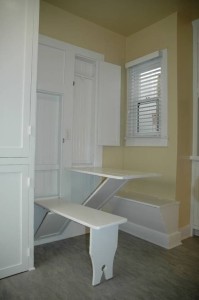Architectural Record is searching for an architect whose big ideas have begun with a drawing on a plain cocktail napkin. Most of us have been there, maybe not on a cocktail napkin, but perhaps with a sketch sheet of paper laying around. See below for the rules on how to enter Architectural Record’s Cocktail Napkin Sketch contest.
If you are a practicing architect in the United States (or trained as one), you can enter this remarkable contest. All you need is a white cocktail napkin and a pen to demonstrate that the art of the sketch is still alive. The winning submission will be published in the August 2010 issue of architectural record and online. In addition, the winner will receive a box of cocktail napkins with the winning sketch printed on them!) Contest runners-up will be included in the online Cocktail Napkin Sketch Gallery. Judges for this contest are architectural record editors. All materials must be postmark no later than Monday, June 21, 2010
Create a sketch on a 5-inch-by-5-inch white paper cocktail napkin.
• Please use ink or ballpoint pen.
• Include the registration form below.
• Send all submissions in one envelope to:
Cocktail Napkin
Sketch Contest
Architectural Record
Two Penn Plaza,
9th Floor
New York, NY
10121-2298
• Sketches are to be drawn specifically for this competition.
• You may submit up to 6 cocktail napkin sketches, but each one should be numbered on the back.
• No digital entries and no digital files are accepted!
• No entries will be returned.
• The architect maintains the copyright for the drawing.
May the best napkin win!


























 As we move from emergency aid to long-term reconstruction, let us recognize that we cannot accept business as usual. What we envision, today, is wholesale national renewal … a sweeping exercise in nation-building on a scale and scope not seen in generations.
As we move from emergency aid to long-term reconstruction, let us recognize that we cannot accept business as usual. What we envision, today, is wholesale national renewal … a sweeping exercise in nation-building on a scale and scope not seen in generations.




